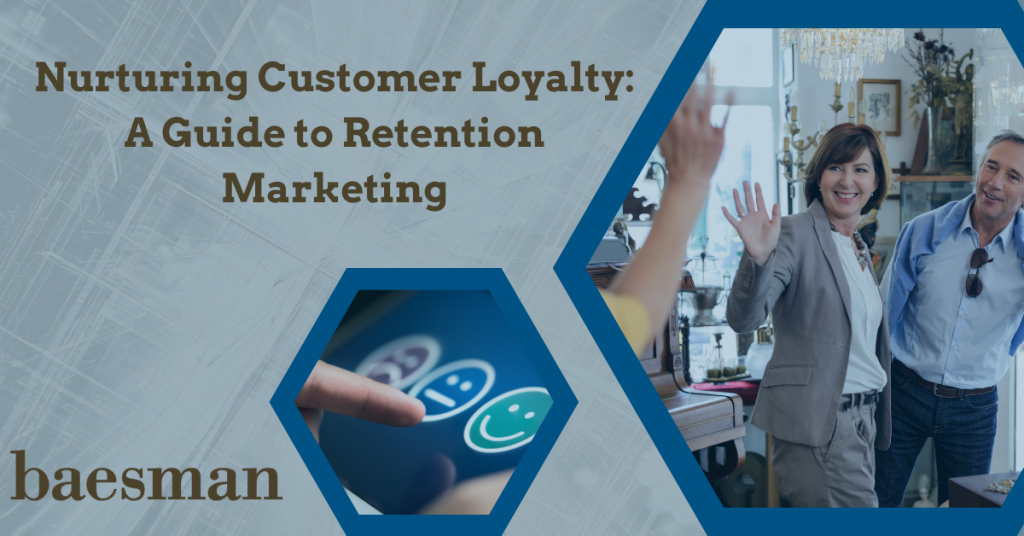The goal is simple: to nurture customer loyalty beyond the first purchase. This involves creating positive customer experiences and building strong relationships.
Why is this important? Because loyal customers are more likely to make repeat purchases. They're also more likely to recommend your brand to others.
In this article, we'll dive into the world of customer retention marketing and explore effective strategies and tactics that can help your business thrive. Whether you're a marketing professional, a business owner, or simply interested in learning more, this guide is for you. Let's explore how to nurture customer loyalty beyond the first purchase!
Understanding Customer Retention Marketing
Customer retention marketing is a strategic approach that focuses on keeping existing customers engaged with your brand. It's about nurturing relationships and fostering loyalty.
This strategy involves understanding your customers' needs and preferences. It's about delivering value consistently and creating positive experiences at every touchpoint.
Here are some key elements of customer retention marketing:
- Personalized communication
- High-quality customer service
- Customer loyalty programs
- Regular customer feedback
- Data-driven insights
Customer Retention vs. Acquisition: A Cost-Benefit Analysis
Acquiring a new customer can cost five times more than retaining an existing one. This is because customer acquisition involves more marketing costs. On the other hand, customer retention emphasizes nurturing established relationships and aims to maximize the long-term value each customer brings to your brand.
In the long run, investing in customer retention can lead to higher profits. It's a strategy that pays off.
What Drives Customer Loyalty?
Customer loyalty is not just about making repeat purchases. It's about customers choosing your brand over others, even when there are similar offerings available.
Several factors drive customer loyalty. These include product quality, customer service, brand reputation, and price.
The most direct cause of customer loyalty is a positive customer experience. When customers have positive interactions with your brand, they're more likely to stay loyal.
This includes every touchpoint, from the first point of contact to post-purchase support. Every interaction matters. Businesses should strive to deliver exceptional customer experiences consistently. This is the key to nurturing customer loyalty.
Building Emotional Connections with Customers
Building emotional connections with customers is another crucial aspect of customer loyalty. Customers who feel emotionally connected to a brand are more likely to stay loyal. This involves understanding your customers on a deeper level. It's about knowing their needs, preferences, and values.
By aligning your brand with your customers' values, you can create a strong emotional bond.
Proven Customer Retention Strategies
There are several proven strategies that businesses can use to retain customers.
One of the most impactful approaches is 1:1 personalization. This strategy entails customizing your marketing communications and product offerings to align with each customer's unique preferences and behaviors.
Another strategy is to leverage data analytics. This can provide valuable insights into customer behavior, which can inform your retention strategies.
Here are some other proven customer retention strategies:
- Implementing a customer loyalty program
- Providing exceptional customer service
- Engaging customers through social media
- Collecting and acting on customer feedback
- Offering exclusive deals and rewards to loyal customers
Personalization: The Key to Customer Engagement
Personalization is a powerful tool for customer engagement. It involves tailoring your marketing messages and offerings to individual customers.
It's so much more than just using their first name. It's about personalized offers that cater to their individual needs, product recommendations based on their past purchases and browsing behavior, and special events that align with their interests and lifestyle.
When customers feel that a brand understands them and their needs, they're more likely to stay loyal. This is why personalization is key to customer engagement and retention.
Leveraging Data Analytics for Customer Insights
Data analytics provide valuable insights into customer behavior. These insights inform your customer retention strategies.
For example, you can use data analytics to identify patterns in customer behavior. This helps you predict future behavior and tailor your strategies accordingly.
You can also use data analytics to segment your customer base. This allows you to target different segments with personalized marketing messages, further enhancing customer engagement and retention.
Creating a Successful Customer Loyalty Program
A customer loyalty program be a powerful tool for customer retention. It rewards customers for their loyalty, encouraging them to make repeat purchases.
The key to a successful loyalty program is to offer rewards and experiences that are valuable to your customers. These rewards should be relevant to your products or services, and they should be easy for customers to earn and redeem.
A well-designed loyalty program can increase customer engagement and loyalty. It also provides valuable data on customer behavior, which can inform your other marketing strategies.
The Role of Rewards and Incentives
Rewards and incentives play a crucial role in customer loyalty programs. They provide a tangible benefit for customers' loyalty, encouraging them to make repeat purchases.
The type of rewards you offer can vary depending on your business and your customers. They could be discounts on future purchases, free products or services, or access to exclusive events.
The key is to offer rewards that are relevant and personalized to your customers. This will encourage them to continue engaging with your brand and making purchases.
Exclusive Offers and Membership Benefits
Exclusive offers and membership benefits can also be effective tools for customer retention. They provide additional value for your customers, encouraging them to stay loyal to your brand.
Exclusive offers could include early access to new products or sales, special discounts, or free shipping. Membership benefits could include access to exclusive content, events, or services.
These offers and benefits make your customers feel valued and appreciated. This can strengthen their relationship with your brand, increasing their loyalty and retention.
Engaging Customers Post-Purchase
Engaging customers after they've made a purchase is crucial for retention. It helps to build a lasting relationship with them.
One way to do this is through follow-up communications. These can include thank you emails, satisfaction surveys, or personalized recommendations for future purchases.
Another effective strategy is to ask for customer feedback. This shows customers that you value their opinions and are committed to improving their experience.
The Power of Follow-Up and Feedback
Follow-up communication post-purchase lets your customers feel valued and appreciated. It also provides opportunities to address any issues or concerns that may have arisen during the purchase process.
Customer feedback is a valuable resource for improving your products or services. It helps to identify areas for improvement and make changes that will enhance the customer experience.
By actively seeking and responding to customer feedback, you'll develop stronger relationships with your customers.
Utilizing Social Media for Community Building
Social media is another powerful tool for engaging customers and building a community around your brand. It allows you to interact with customers on a more personal level.
You can use social media to share updates, promote new products or sales, and respond to customer comments or questions. You can also use it to share customer testimonials or success stories, which can build trust and loyalty.
By creating a strong social media presence, you'll foster a sense of community among your customers. This further increases engagement with your brand.
Measuring Success in Customer Retention
Measuring the success of your customer retention efforts is crucial. It helps you understand the effectiveness of your strategies and identify areas for improvement.
There are several key metrics that can help you track customer loyalty. These include repeat purchase rate, customer lifetime value (CLV), and churn rate.
- Repeat purchase rate measures the percentage of customers who make more than one purchase.
- Customer lifetime value (CLV) estimates the total revenue a business can reasonably expect from a single customer account.
- Churn rate calculates the percentage of customers who stop doing business with a company during a given period.
By tracking these metrics, you can gain insights into your customers' behavior and loyalty. This can help you refine your retention strategies and improve customer satisfaction.
So, what do these metrics indicate? Repeat purchase rate is a key indicator of customer loyalty. A high repeat purchase rate suggests that customers are satisfied with your products or services and are likely to continue doing business with you.
Customer lifetime value (CLV) is another important metric. It helps you understand the long-term value of each customer and can guide your retention efforts.
Churn rate is a measure of customer attrition. A high churn rate may indicate dissatisfaction among your customers and highlight areas where improvements are needed.
Continuous Improvement through Customer Feedback
Customer feedback is a valuable tool for continuous improvement. It provides insights into what customers like and dislike about your products or services.
By actively seeking and responding to customer feedback, you can make necessary improvements. This can enhance the customer experience and increase loyalty.
Remember, customer retention is an ongoing process. It requires constant monitoring and adjustment to ensure that your strategies are effective and that your customers remain satisfied and loyal.
The Ongoing Journey of Customer Retention
Customer retention marketing is not a one-time effort, but an ongoing journey. It requires a deep understanding of your customers, their needs, and their behaviors.
Thank you to our friends at Baesman Group for providing this valuable information.
If you are interested in being featured on our Family Business Insights or have any questions please contact lflint@familybusinesscenter.com


